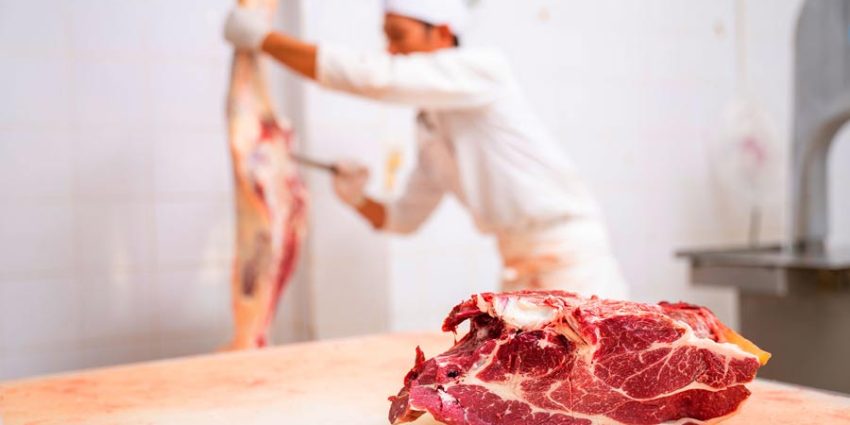In the world of meat processing, a butcher’s knife isn’t just a tool—it’s an extension of the hand. The balance of a butcher’s knife can make all the difference, transforming the arduous task of cutting meat into a seamless, efficient process. A well-balanced knife reduces fatigue, enhances control, and improves overall precision, making it an essential factor for meat processing professionals. But why exactly is balance so critical? Let’s dive in.
Understanding Knife Balance
Knife balance refers to the distribution of weight between the blade and the handle. This balance impacts how the knife feels and performs during use. Imagine holding a knife where the blade is much heavier than the handle; it would feel awkward and unwieldy, requiring extra effort to maintain control. Conversely, a knife with a balanced weight between the blade and the handle feels intuitive and responsive.
A knife with neutral balance, where the weight is evenly distributed, allows for greater control and precision. This balance is achieved when the knife’s center of gravity is located at the point where the blade meets the handle. Such a knife feels neither too heavy at the tip nor at the base, making it ideal for various cutting tasks.
Ergonomic Considerations
Ergonomic design is paramount in creating a well-balanced butcher’s knife. Factors such as handle shape, grip texture, and blade curvature all contribute to the knife’s overall balance and ease of use. A handle that fits comfortably in the hand, with a grip that prevents slipping, allows for prolonged use without causing strain.
Ergonomic features are not just about comfort—they’re about safety, too. A knife that reduces hand fatigue minimizes the risk of repetitive strain injuries, which are common in the meat processing industry. By considering ergonomics in knife design, manufacturers can create tools that support both the health and efficiency of the user.
Impact on Cutting Performance
The balance of a knife significantly influences cutting performance. A well-balanced knife allows for precise, controlled cuts, enabling the butcher to work quickly and efficiently. When a knife is balanced, the user can focus on the task at hand without constantly adjusting their grip or compensating for uneven weight distribution.
Unbalanced knives, on the other hand, pose numerous challenges. They require more effort to maneuver, leading to uneven cuts and reduced accuracy. The increased effort also translates to quicker fatigue, diminishing the butcher’s ability to maintain high-quality work over extended periods. This not only affects productivity but also the quality of the meat being processed.
Safety and Comfort
Safety in the workplace is paramount, and a well-balanced knife contributes significantly to a safer working environment. A balanced knife is easier to control, reducing the likelihood of slips and accidental cuts. It also allows for a more natural, comfortable grip, minimizing strain on the hand and wrist.
Comfort is equally important. Butchers who use well-balanced knives experience less fatigue, allowing them to work longer without discomfort. This comfort translates to better performance and higher job satisfaction, ultimately contributing to a more efficient and productive workplace.
Choosing the Right Knife
Selecting a butcher’s knife with optimal balance involves several considerations. First, it’s essential to test the knife’s feel and balance before purchasing. Holding the knife, one should pay attention to how it feels in the hand—whether it feels comfortable and balanced or awkward and heavy.
Ergonomic features should also be considered, such as the handle design and grip texture. Seeking recommendations from experienced professionals can provide valuable insights into which knives perform best in various scenarios. Investing in high-quality knives with proper balance ensures long-term performance and durability, making it a worthwhile investment for any meat processing professional.
Training and Technique
Even the best-balanced knife requires proper training and technique to maximize its benefits. Butchers should be trained in proper knife handling, grip techniques, and cutting motions. These skills not only enhance efficiency but also ensure safety in meat processing operations.
Proper technique involves using the right amount of force, maintaining a consistent grip, and making controlled, precise cuts. By mastering these skills, butchers can fully leverage the advantages of a well-balanced knife, achieving optimal results in their work.
Conclusion
The balance of a butcher’s knife plays a crucial role in its performance, safety, and user comfort. A well-balanced knife reduces fatigue, enhances control, and improves cutting precision, making it an invaluable tool in the meat processing industry. By prioritizing knife balance when selecting and using knives, meat processing professionals can achieve better results, enhance their efficiency, and create a safer, more comfortable working environment. So, next time you’re in the market for a butcher’s knife, remember: balance is key to the perfect cut.

